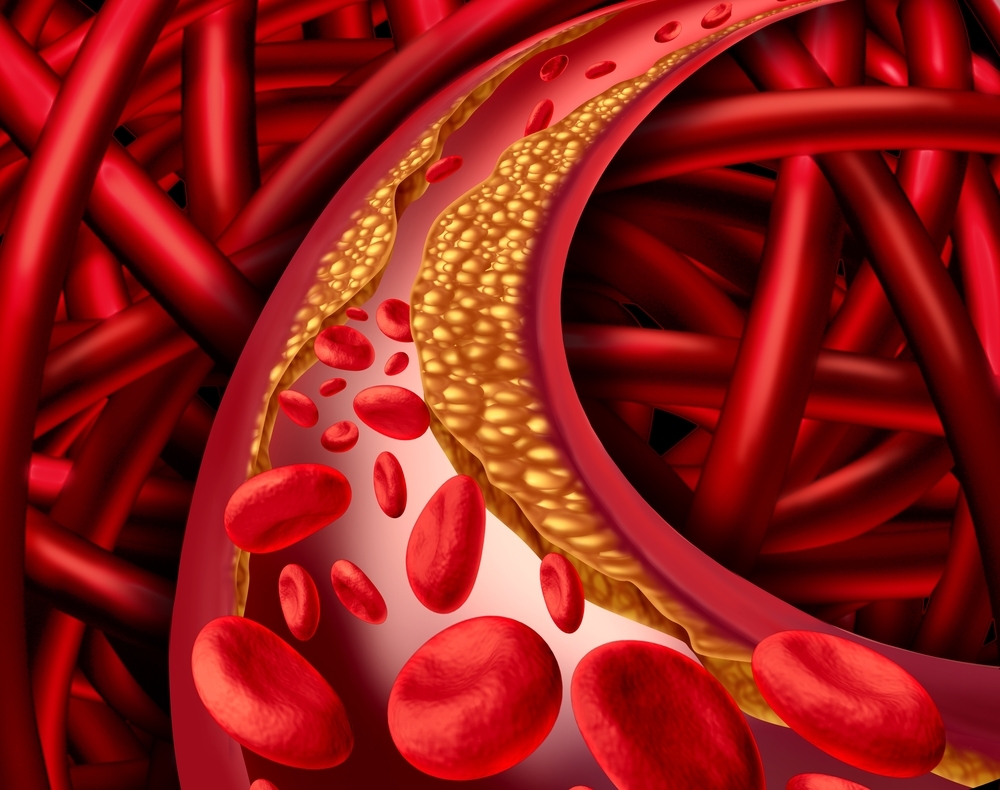

A study by researchers at the University of São Paulo advocates closer monitoring of these patients and prescribing more powerful drugs to combat atherosclerosis (image: NHLBI/NIH)
A study by researchers at the University of São Paulo advocates closer monitoring of these patients and prescribing more powerful drugs to combat atherosclerosis.
A study by researchers at the University of São Paulo advocates closer monitoring of these patients and prescribing more powerful drugs to combat atherosclerosis.

A study by researchers at the University of São Paulo advocates closer monitoring of these patients and prescribing more powerful drugs to combat atherosclerosis (image: NHLBI/NIH)
By André Julião | Agência FAPESP – A study conducted at the University of São Paulo’s Medical School (FM-USP) in Brazil, with a sample of 120 patients, showed a link between a history of ischemic strokes and the risk of further vascular disease, including more strokes and heart attacks. An article reporting the study is published in Cardiology and Cardiovascular Medicine.
At Hospital das Clínicas, the hospital complex run by FM-USP, the researchers measured a parameter called “calcium score” in 80 stroke patients and 40 other volunteers with no stroke history. Obtained by means of CT scans, the score serves as an indicator of the risk of coronary atherosclerosis (fatty deposits narrowing the arteries of the heart). The farther above zero, the higher the risk of developing the disease, even in patients with no symptoms.
“We found that 85% of the stroke patients had a calcium score above zero, in contrast with 57.5% of the subjects that had never had a stroke. Stroke patients had higher scores than the rest of the study sample. That doesn’t mean they were fated to have heart attacks or more strokes, but their having higher scores even though they were being treated to avoid such problems should sound the alarm,” Ana Luíza Vieira de Araújo, first author of the article, told Agência FAPESP.
The study was conducted during Araújo’s doctoral research at FM-USP and was part of a project funded by FAPESP and coordinated by Adriana Bastos Conforto, a faculty member in the graduate studies program at FM-USP and head of its Cerebrovascular Disease Group.
“Stroke patients are now prescribed medications that are supposed to prevent coronary artery disease. Risk factors for atherosclerosis, such as high blood pressure and diabetes, are controlled. Even so, in our study these patients had calcium scores that suggested a stronger propensity to suffer more strokes or heart attacks,” Conforto said. Márcio Sommer Bittencourt, a physician at the University Hospital (HU-USP), was co-principal investigator for the study.
Calcium is a natural component of blood and circulates normally through veins and arteries. It can accumulate in atherosclerosis plaque, hardening the arteries and potentially blocking them with blood clots. In this case, less blood flows to the heart, potentially leading to a heart attack, and brain, risking a stroke. These two diseases are among the main causes of death in Brazil.
Monitoring needed
The researchers stressed the need for more consistent monitoring of these patients, who are at greater risk of suffering another stroke or having a heart attack. “Stroke patients often display cognitive complications and find it hard to adhere to the treatment,” Conforto said. “Our findings suggest they should be followed up more closely. This monitoring could be done, for example, by professionals in the Family Health Program offered by the SUS [Sistema Único de Saúde, Brazil’s national health system]. This and other strategies could avoid deaths from heart problems even in patients who have survived a stroke.”
Cardiovascular disease is the leading cause of death worldwide, according to the World Health Organization (WHO). About 85% of strokes are ischemic, and roughly a fifth to a quarter of these are caused by atherosclerosis. In developed countries, programs based on adherence to treatment and lifestyle improvements have achieved a reduction in the number of deaths.
“In Brazil, this is a serious public health problem and merits special attention,” Conforto said.
As if additional evidence of its prevalence were needed, part of the control group (with no stroke history) also displayed risk factors for atherosclerosis during the study. Although their propensity was lower than in stroke patients, most members of the control group had calcium scores above zero, indicating risk. “Many of them only discovered they had diabetes or high cholesterol because of the study,” Araújo said.
Besides recommending closer monitoring for high-risk patients, the researchers advocated the prescription of more powerful drugs for the group with atherosclerosis in two arteries and hence a stronger predisposition to coronary artery disease. The study could serve as a basis for clinical research on this high-risk group and, depending on the results, adoption of the drugs by state-run health services.
The article “Association of subclinical coronary artery disease and ischemic stroke caused by cervical or intracranial atherosclerosis” is at: www.fortunejournals.com/articles/association-of-subclinical-coronary-artery-disease-and-ischemic-stroke-caused-by-cervical-or-intracranial-atherosclerosis.html.
Republish
The Agency FAPESP licenses news via Creative Commons (CC-BY-NC-ND) so that they can be republished free of charge and in a simple way by other digital or printed vehicles. Agência FAPESP must be credited as the source of the content being republished and the name of the reporter (if any) must be attributed. Using the HMTL button below allows compliance with these rules, detailed in Digital Republishing Policy FAPESP.





